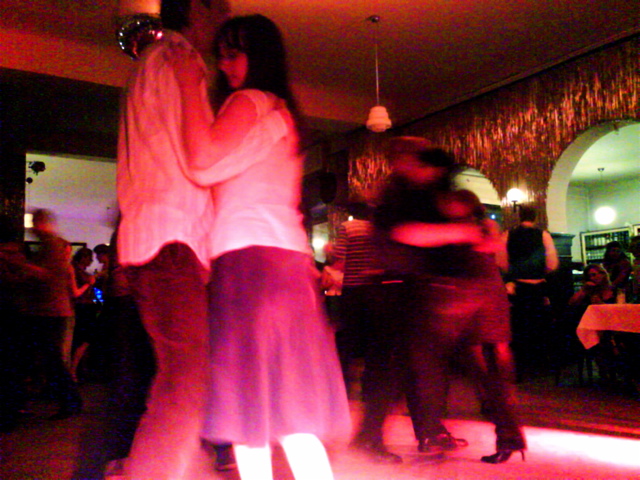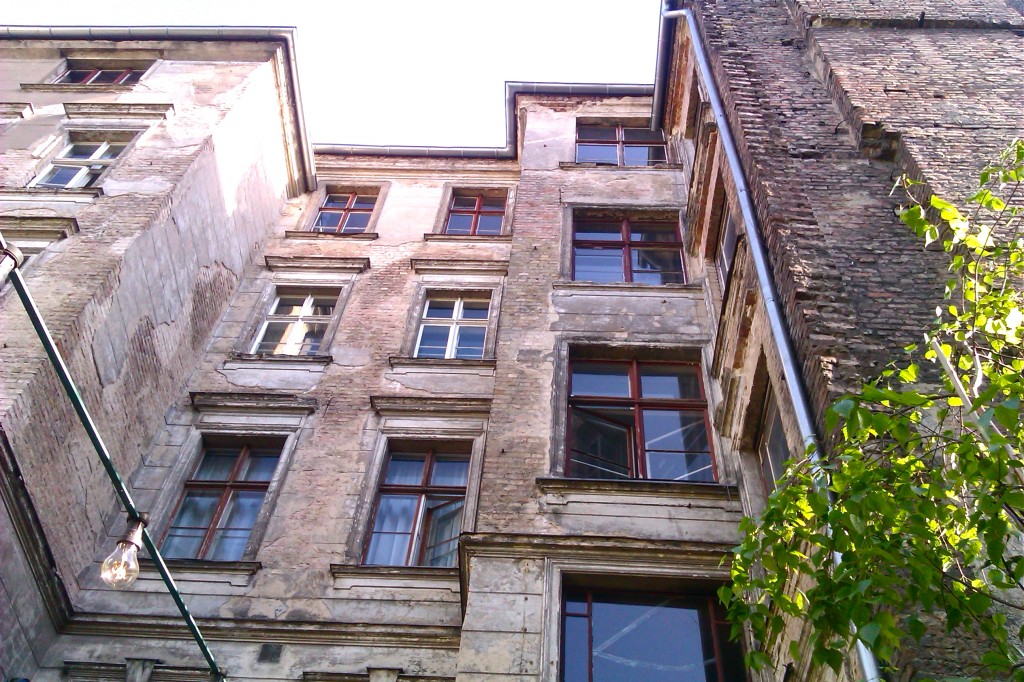How to Fall in Love in Clärchens Ballhaus
Creak open the door to Clärchens Ballhaus. Can’t you hear the jazz band playing? It’s calling out to you all the way from the 1920s, barely audible through the din of Nazism and the Cold War (those tyrants sure made a lot of clatter!). As you dip inside, the clarinet’s louder. Slip on your dancing shoes and pan the crowded dance floor. You’re packed between people of all ages. The 96-year-old has a flicker of recognition in her eyes. Don’t be surprised, it’s one of the few places left in Berlin where the roaring decade keeps its heart beating. You see someone else. A young beauty, born decades later, has a different flicker in the eyes––and it’s for you. Clärchens is the perfect place to meet someone, this is where your eyes meet.
Clärchens is by now a tourist destination in every guidebook, an institution, a cliché of Berlin, but one that both tourists and Berliners embrace. The reason is that it provides a glimmer of nostalgia that we all hanker for in a city that’s seen too many hard times. This still-functioning 1920s ballroom is evidence of the glorious decade of sex, falling inhibitions, the explosion of creative energy amidst the instability and strife of Weimar. It’s a story Berlin actually enjoys telling about itself!
The Gründerzeit building in Auguststr., in Berlin’s Mitte, opened as a Ballhaus in 1913 under the management of Fritz Bühler. When he passed away, it was taken over by his widow Clara Habermann. She gave it her diminutive, ‘little Clara’, or ‘Clärchen’. It was in the 1920s that the dance hall made an enduring reputation for itself. It appeared in Döblin’s Berlin Alexanderplatz. Its sign (still in use) was painted by New Objectivity bad-boy Otto Dix and there’s an equivocal story circulating about a Georg Grosz mural hiding under all the paint and tinsel in the downstairs main room. There the hoi polloi of Berlin gathered while the upstairs Spiegelsaal, or ‘mirror room’, catered to high society (and to powerful Nazis who later turned it into an officers’ casino). This ambiance was seized upon by Quentin Tarantino who used Clärchens as a location for his film Inglorious Bastards.
During WW2 the building was badly damaged. One of the most impressive aspects of Clärchens is its enormous florid front garden, where the Vorderhaus, or street-front building, once stood. Only the rear building survived the air raids, and the doors and hallways which once connected the two are visibly bricked up as you stare up the many floors of shambolic façade. The Spiegelsaal became a storeroom until it was (recently) reclaimed––the mirrors and walls left cracked, clouded and distressed, so one really does feel like one has waltzed into the past. With top hat, white tie and tails!
The story of Clärchen’s ownership is almost as eventful as its structural history. Astoundingly, the institution remained under family management for 91 years. In East German times, it was passed on to Clara’s step daughter, and then on to her son, Stefan Wolff, who took it over in 1979. Throughout the GDR period it continued to be a dance hall and point of meeting between East and West Germans. With the restitution of property to pre-war owners after reunification, Clärchens Ballhaus was returned to Clara’s blood-daughter. But when she died in 2003, the building went up for sale. New management sent Stefan Wolff, and the Clärchen dynasty, packing. This left Wolff with a “Scheißgefühl”, or so he said in an interview. He no doubt needed more than one Nante-Knaller (the dance hall’s signature drink of 2 parts whiskey, 1 part Curaçao, topped with Sekt) to swallow the bitter changes in the system.
But while many feared it was the end of an era, they must give a certain amount of credit to the new owners Christian Schulz and David Regehr. Clärchens is not over-renovated, it has remained a historic dance hall, and it is as popular as ever. It has moody old-world waiters who seem like they’ve always been there (maybe they have), period furnishings, a mismatched menu of Neapolitan pizza and German sausages that prevents this place from becoming a ‘theme restaurant’. Each night of the week has different old-world dance music: Tango, Swing or Chacha, with live bands on the weekends. You can even take a cheap dance class earlier in the evening so that you can better impress your potential partners once the floor is packed with stiff-dancing clients (I must admit the stereotype is often true here, these Northern Europeans can be very serious about the right steps! But accuracy thankfully deteriorates with the course of the evening’s alcohol consumption).
 Clärchens is, more than anything, now known as a respectable place to meet a tall dark law student across a crowded room. Something about all that history and nostalgia induces perfect strangers to ask each other to dance. They get pushed up against one another by the romping crowd, there are giggles, stray hands, and soon enough they are making babies. It’s become a cliché to say you met your husband in Clärchens.
Clärchens is, more than anything, now known as a respectable place to meet a tall dark law student across a crowded room. Something about all that history and nostalgia induces perfect strangers to ask each other to dance. They get pushed up against one another by the romping crowd, there are giggles, stray hands, and soon enough they are making babies. It’s become a cliché to say you met your husband in Clärchens.
And how wonderful, astounding and uplifting! In a city where the past is usually terrifyingly depressing, a place imbued with the past has the effect of making people fall in love! Just like in 1913, or 1929, or 1989, or all those other 99 years since Clärchens opened her doors and put on her dancing shoes. Now shouldn’t you?






